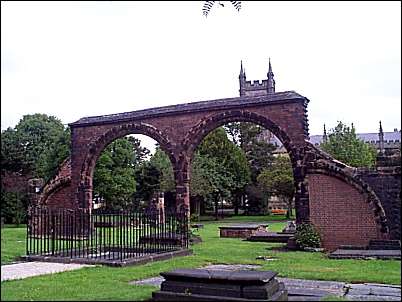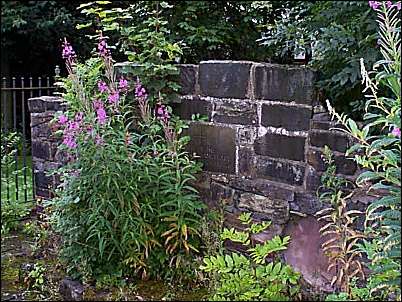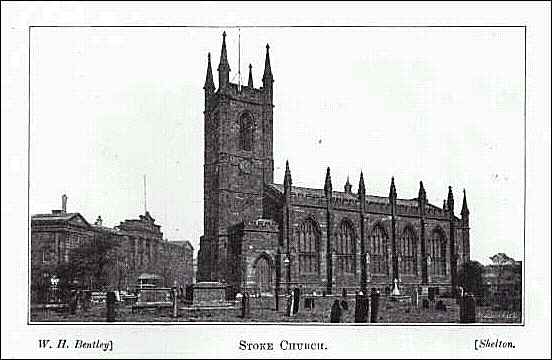|
Stoke Church:
The church
defines Stoke and we have seen that that the name derives from the
church or preaching point established in the village.
As well as the
fragment of the Saxon Cross dating from around 800 AD, we can also
find in St. Peters church yard the remains of a medieval altar and
the
A Saxon font is still
used for the christenings which take place at the church.

Ruins of the late C12
medieval church erected as an arch
The material of the
old medieval church was scattered far and wide; many stones found
their way to Boothen Mill, where they were used to line the
waterway to the millpond. Following their discovery they were
returned to the church yard and erected by the architect Charles
Lyman in 1887 (1881?) as a reconstruction of the nave's south
arcade.
The railed area in front
of the arches is
the tomb of Josiah Wedgwood I

The remains of the
late C12 altar of the medieval church
The inscription
reads:
"Site of the altar and sanctuary
of the ancient church"
Photos: July 2000
St. Peter ad Vincula is closely
associated with the ceramic industry for which this city is famous.
Josiah Wedgwood and Josiah Spode are both buried in the churchyard
and have family memorials in the church.

1893 view of St.
Peters Church, Stoke
Taken from a 1893
trade journal. Picture taken from St. Peters church yard.
The Town Hall is in the background and Glebe Street runs between the
church and Town Hall.
from an 1893 journal on The Potteries:
"The old parish church of Stoke was
situated in the immediate vicinity of Rykenield Street [the old
Roman road]; and the present church, which was rebuilt in 1826-29,
stands on glebe land, formerly attached to the old churchyard. It is
a very handsome structure in stone, in the Early English style....
In the churchyard are two stones which bear ample testimony to the
salubrity of the neighbourhood. They are to the memory of Sibil
Clarke, d. 1684, aged 112 years, and Henry Clark, also 112 years
old. The registers of the church date back to 1630."
|
![]()
![]()
![]()
![]()
![]()
![]()